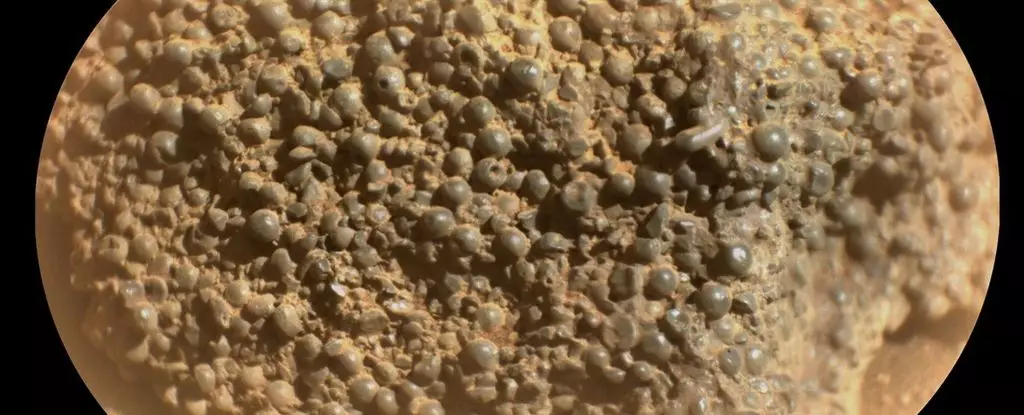Mars continues to astound scientists with its geological oddities, and a recent finding by the Perseverance rover serves as a testament to this endless intrigue. As the rover navigated the rocky terrain of Broom Point on the rim of Jezero Crater, it discovered a bizarre rock formation, christened St. Pauls Bay, which appears evocative of a frothy, bubbly texture reminiscent of frogspawn. This formation, characterized by numerous tiny dark gray spherules clustered together, challenges conventional geological understanding, leaving researchers puzzled about its origins and composition.
Defying Earthly Geological Norms
St. Pauls Bay stirs a sense of wonder and curiosity, particularly because it stands apart from typical rock occurrences in Mars’ vicinity. Unlike the crystalline minerals we find on Earth, the mechanisms behind the formation of these spherules on Mars remain largely elusive. On our planet, structures known as botryoidal formations can be explained through well-documented processes involving various minerals. However, the unique characteristics of St. Pauls Bay suggest that its genesis might be governed by entirely different environmental conditions, setting it apart from its terrestrial cousins such as grape agate or hematite.
Such geological anomalies compel us to rethink our perceptions of extraterrestrial geology. The composition might hint at the historical processes that have shaped Mars over billions of years. The juxtaposition of familiar formations with the foreign context of a Martian landscape makes for an exhilarating discussion in planetary science.
The Layers of Mystery: How Did It Form?
The origins of St. Pauls Bay are steeped in speculation. One potential path to its creation could reside in the processes of volcanic activity or meteorite impacts, which are known to produce spherical formations from rapidly cooled molten rock. Mars’ harsh environment, once thought to harbor vast amounts of water, leaves an enigmatic imprint on the formation of these rocks. Historical evidence suggests that similar “blueberries,” formed through aqueous processes, exemplify how minerals can develop in wet conditions, while other formations have emerged in apparent dryness.
Yet, the conundrum intensifies as St. Pauls Bay is classified as a float rock. This implies it was not born in situ but was transported from elsewhere. The absence of its bedrock context complicates efforts to ascertain the specific formation cause—whether that be fire, water, or perhaps an interplay of both. The ongoing orbital observations have teased out the presence of a dark layer of rock nearby, which might be linked to its history, yet a closer examination remains necessary to piece this geological puzzle together.
The Implications of Perseverance’s Mission
As the Perseverance rover prepares to draw nearer, the potential revelations about St. Pauls Bay represent more than just another geological curiosity; they could redefine our understanding of Martian geology. Each discovery further cements Mars as a dynamic planet, presenting landscapes and conditions that provoke awe and intrigue. The enigmatic nature of St. Pauls Bay underscores the importance of continued exploration and, more significantly, inspires not just curiosity but a profound sense of connection to the broader narrative of planetary evolution across the cosmos.
In the quest for knowledge, St. Pauls Bay stands as a beacon of complexity, urging humanity to delve deeper into the geological history that Mars has to offer, while reminding us of the rich tapestry that exists in our solar system—a narrative imbued with questions yet to be answered and discoveries waiting to unfold.

